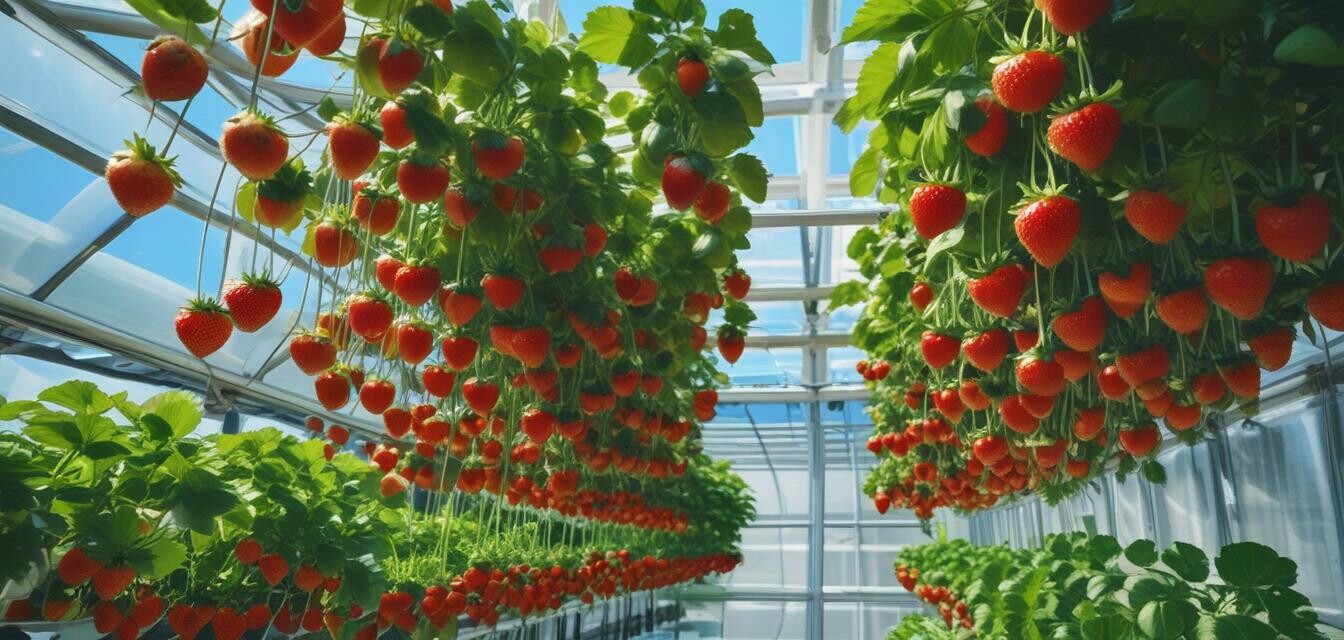
Fruits That Thrive in Hydroponic Systems
Key Takeaways
- Hydroponics allows for a variety of fruits to be grown indoors.
- Optimal pH and nutrient levels are essential for fruiting plants.
- Strawberries, tomatoes, and peppers are top choices for hydroponic systems.
- Proper lighting and care can significantly increase yields.
- Understanding each plant's specific needs is crucial for success.
Hydroponic gardening is more than just growing vegetables; it opens the door to a variety of fruits that can thrive in soilless conditions. Whether you're a seasoned gardener or a curious beginner, understanding which fruits can be effectively grown hydroponically can enhance your indoor garden experience. In this guide, we’ll cover popular fruits for hydroponic systems and provide expert care tips to help you achieve a plentiful harvest.
Why choose hydroponics for growing fruits?
Hydroponic systems provide an ideal environment for fruit growth. Without soil, plants can grow faster and yield more fruit. The elimination of soil-borne pests and diseases also makes nutritionally rich fruits more attainable. Here are a few benefits:
- Controlled environment promotes faster growth.
- Artwork-like design with vibrant fruits.
- Reduced space requirements for growing.
- Less water usage compared to traditional gardening.
Top fruits to grow in hydroponic systems
| Fruit | Growth Duration | Nutrient Requirements | Optimal pH Level |
|---|---|---|---|
| Strawberries | 4-6 weeks | High in potassium and magnesium | 5.5 - 6.5 |
| Tomatoes | 6-10 weeks | Rich in nitrogen and phosphorus | 5.5 - 6.5 |
| Peppers | 8-12 weeks | Balanced NPK nutrients | 5.5 - 6.0 |
| Blueberries | 12-18 weeks | High in phosphorus | 4.5 - 5.5 |
| Raspberries | 8-10 weeks | High in potassium | 5.0 - 5.8 |
| Cucumbers | 5-7 weeks | High in nitrogen | 5.5 - 6.5 |
Expert tips for growing fruits in hydroponic systems
Beginner’s Section
- Choose the Right System: Different fruits thrive in specific types of hydroponic systems. Research each fruit’s ideal growing conditions.
- Monitor Nutrient Levels: Regularly check and adjust the nutrient solution to match the needs of your plants.
- Maintain Optimal Lighting: Use grow lights that mimic sunlight to ensure your plants receive the right amount of light.
- Pay Attention to pH Levels: Keep pH levels consistent to prevent nutrient deficiencies.
- Pollinate When Necessary: Some fruits, like tomatoes, may require manual pollination to yield fruit.
Common challenges and how to overcome them
While growing fruits hydroponically offers numerous benefits, there are challenges to consider:
- Pest control: Although hydroponics reduces soil pests, pests can still attack your plants. Regular monitoring and using organic pest controls can help.
- Nutrient Deficiencies: Ensure your nutrient solution is balanced. Test regularly to avoid deficiencies that can hinder growth.
- Fruit Size and Quality: Sometimes fruits may be smaller than expected. Adjusting light, nutrients, and plant spacing can improve quality.
Conclusion
Growing fruits in hydroponic systems is a rewarding venture that can yield a delightful variety of produce year-round. With the right knowledge and techniques, anyone can create their own fruitful indoor garden. For further insights into hydroponic gardening, check out our comprehensive guides on growing techniques and nutrient management.
Pros
- Higher yield potential compared to traditional gardening.
- Fruits can be grown regardless of outdoor conditions.
- Less water consumption than soil gardening.
- Minimal waning of nutrients due to recirculating systems.
Cons
- Initial costs can be higher for hydroponic systems.
- Requires continual monitoring of nutrient solutions.
- Some fruits may need specific care or conditions that are complex.
- Potential for system failures leading to plant loss.
Further Resources
To explore more about hydroponic systems, visit our page on AeroGarden systems or delve into our collection of books and guides on hydroponics.